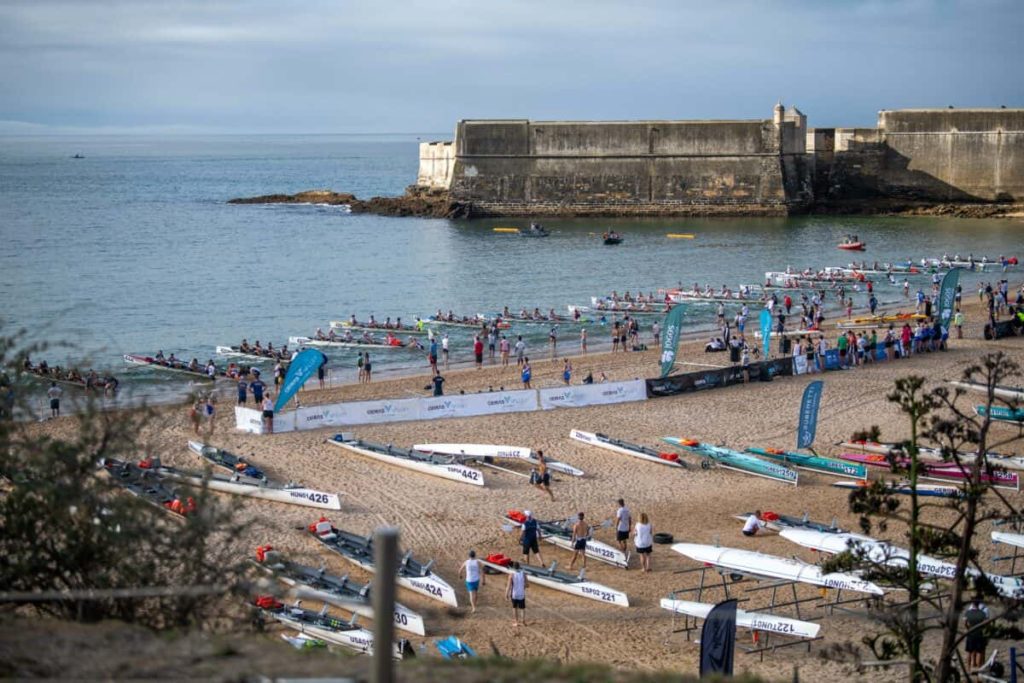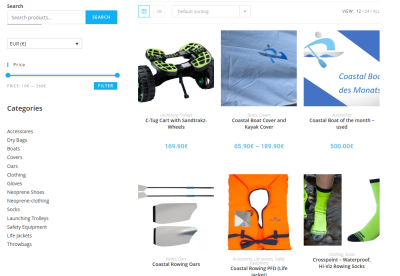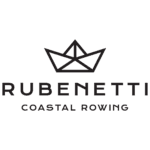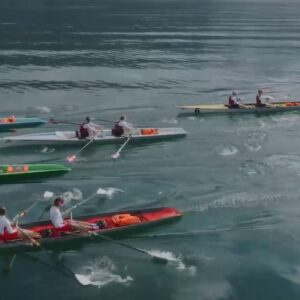The start of a Coastal Rowing Regatta. In Coastal Regattas, we can currently observe two types of starts – the flying start with a starting line in the water and the beach start. The beach start is typically only used in beach sprints but is also becoming more and more common in regular endurance races, like in Oeiras last year. But more on that later!
Flying Start
There are several things to consider with a flying start. The boats must remain behind the starting line until the start. However, they do not have to remain motionless. Again and again, you will see rowers who line up far behind the starting line and are already moving towards the starting line at full speed before the actual starting gun is fired. Of course, this has the advantage of already having enough speed at the start. However, the trick is not to cross the line prematurely. Otherwise, the start will be counted as a false start. However, a little training in preparation can help to anticipate this moment.
Beach Start
A beach start is always something special. It’s always a challenge, especially with the sprint on the sand. The rowers stand on the beach and wait for the starting gun. When the starting gun goes off, they run to the boat and get on. To keep a boat stable, each boat has two helpers to hold it. This is the only way to get started in an orderly manner. Every athlete has their own tricks for how to get into the boat and row away the fastest. In the beginning, the following questions should be answered: Do the shoes fit properly, where are the skulls and which side do I step on? It is important to be mentally prepared! The underground is also important here. Do you have stones that could hurt your feet or just sand? We have had very good experiences with waterproof socks on sandy ground. These prevent you from getting cold, wet or sandy feet at the start.
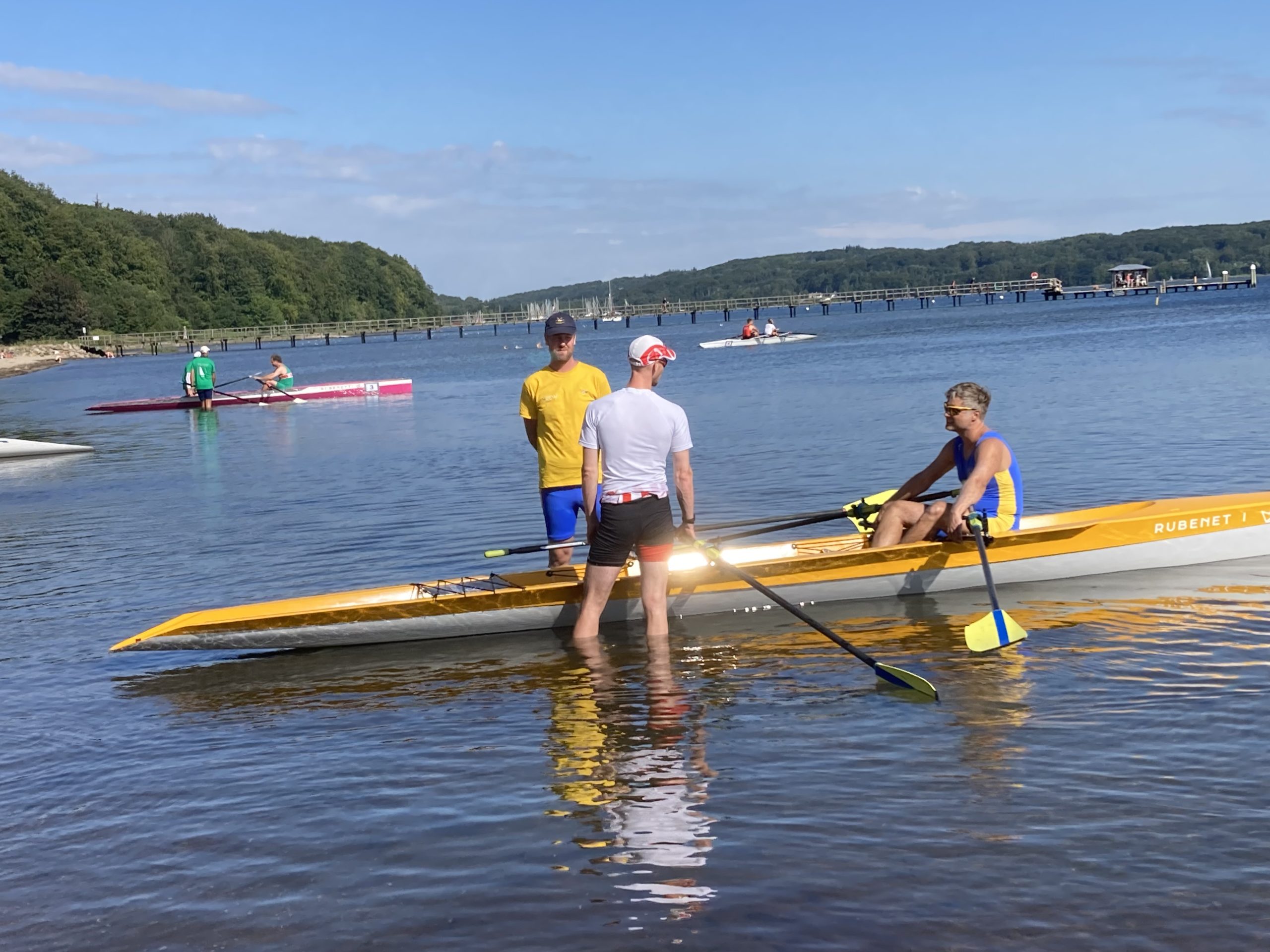
All rowers usually have two helpers at the boat. They are called boat handlers and keep the boat horizontal and align the skulls. All of this is planned exactly so that entering the boot works as quickly and smoothly as possible. It’s not always easy. The swell and the waves often make it bumpy, or you could also say, challenging and exciting for the viewers and the rowers.
The disadvantage of the Beach Start

Beach Starts are fun but not the best for the fin of your boat. The boats either lay with their fins on the sand (or you have to prepare a little hole, like in the picture above) or they dig themselves into the sand the moment you return as fast as possible to the finish line. The whole situation can easily lead to broken fins. We have seen this a lot and wrote some comments about it when we were at the Coastal Rowing Worldcup in Oeiras.
In general, the beach start will most likely be the preferred start for Coastal Regattas, as they make races more exciting than traditional starts. And Coastal Rowing, in particular, as a very young discipline, relies on excitement because it generates more income with television viewers and marketing. Beach Start or Flying Start, what do you prefer? Let us know in the comments!

